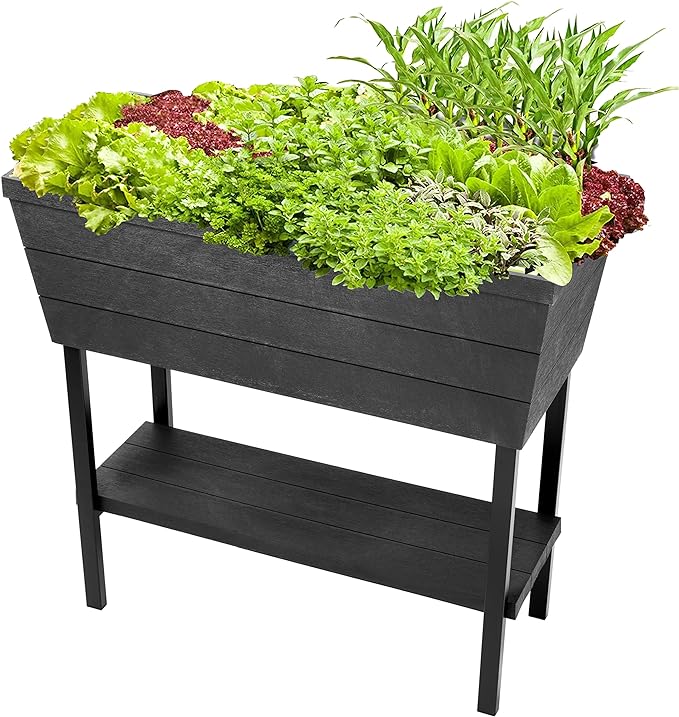8 plants that bloom at night – flowers perfect for a moon garden
These flowers bloom after sunset, attracting nighttime pollinators. They enhance your garden’s evening ambiance while supporting a thriving nocturnal ecosystem
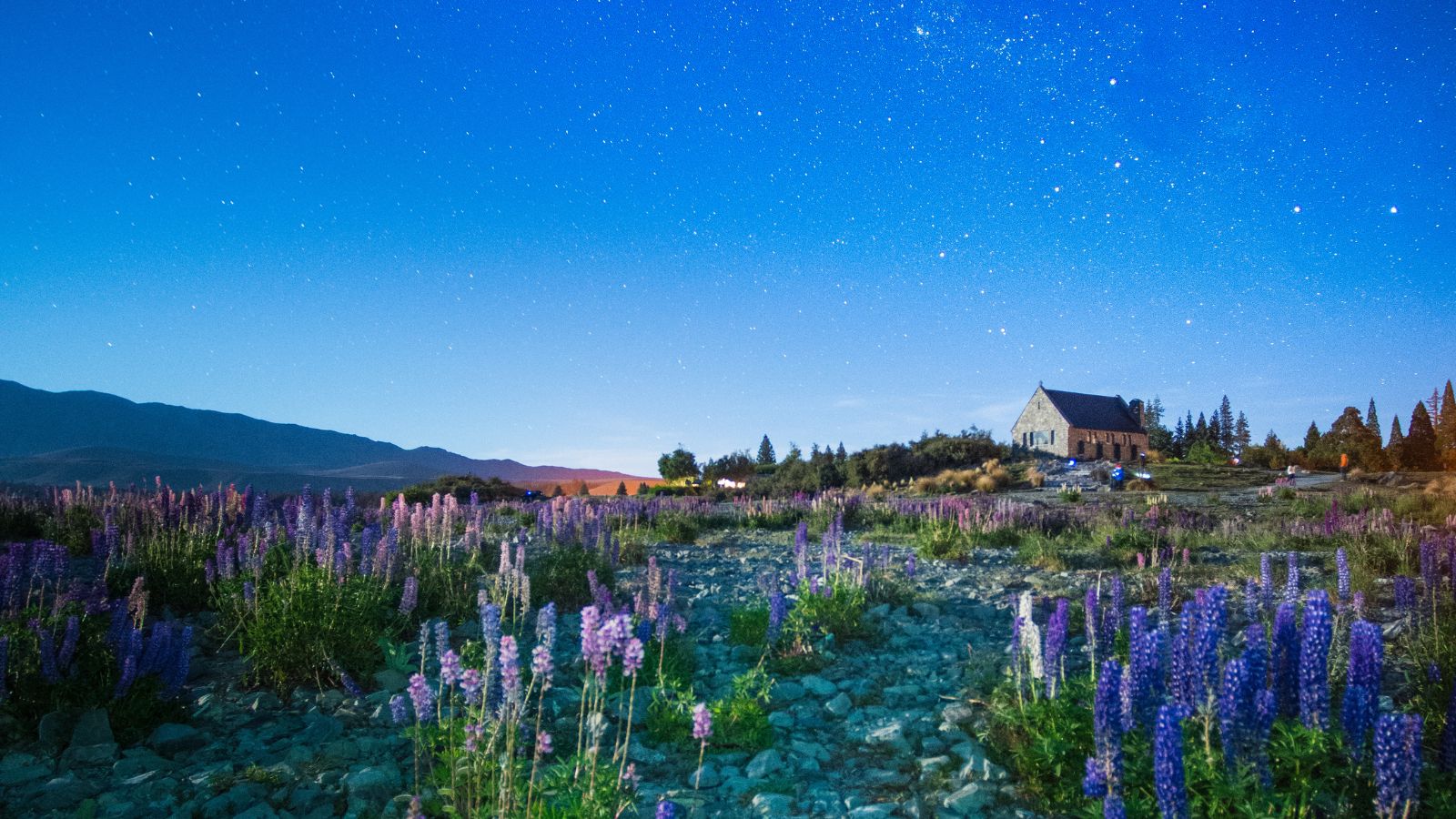
- 1. Moonflower (Ipomoea alba)
- 2. Night-Blooming Jasmine (Cestrum nocturnum)
- 3. Evening Primrose (Oenothera biennis)
- 4. Tuberose (Polianthes tuberosa)
- 5. Night Phlox (Zaluzianskya capensis)
- 6. Four O’Clocks (Mirabilis jalapa)
- 7. Queen of the Night (Epiphyllum oxypetalum)
- 8. Angel’s Trumpet (Brugmansia spp.)

As the day gives way to night, certain plants come to life, unveiling beautiful hidden blooms and unexpected fragrances. Night-blooming plants have adapted to thrive in low-light conditions, flourishing in the evening and attracting nocturnal pollinators that contribute to the garden’s health.
By incorporating these remarkable plants, you can create a moon garden that transforms your outdoor space, enhancing its beauty for evening gatherings while supporting a vibrant ecosystem.
Planting night-blooming plants and embracing the concept of gardening by the moon, you can align your planting and care routines with the lunar cycle to cultivate a garden that thrives under the stars.
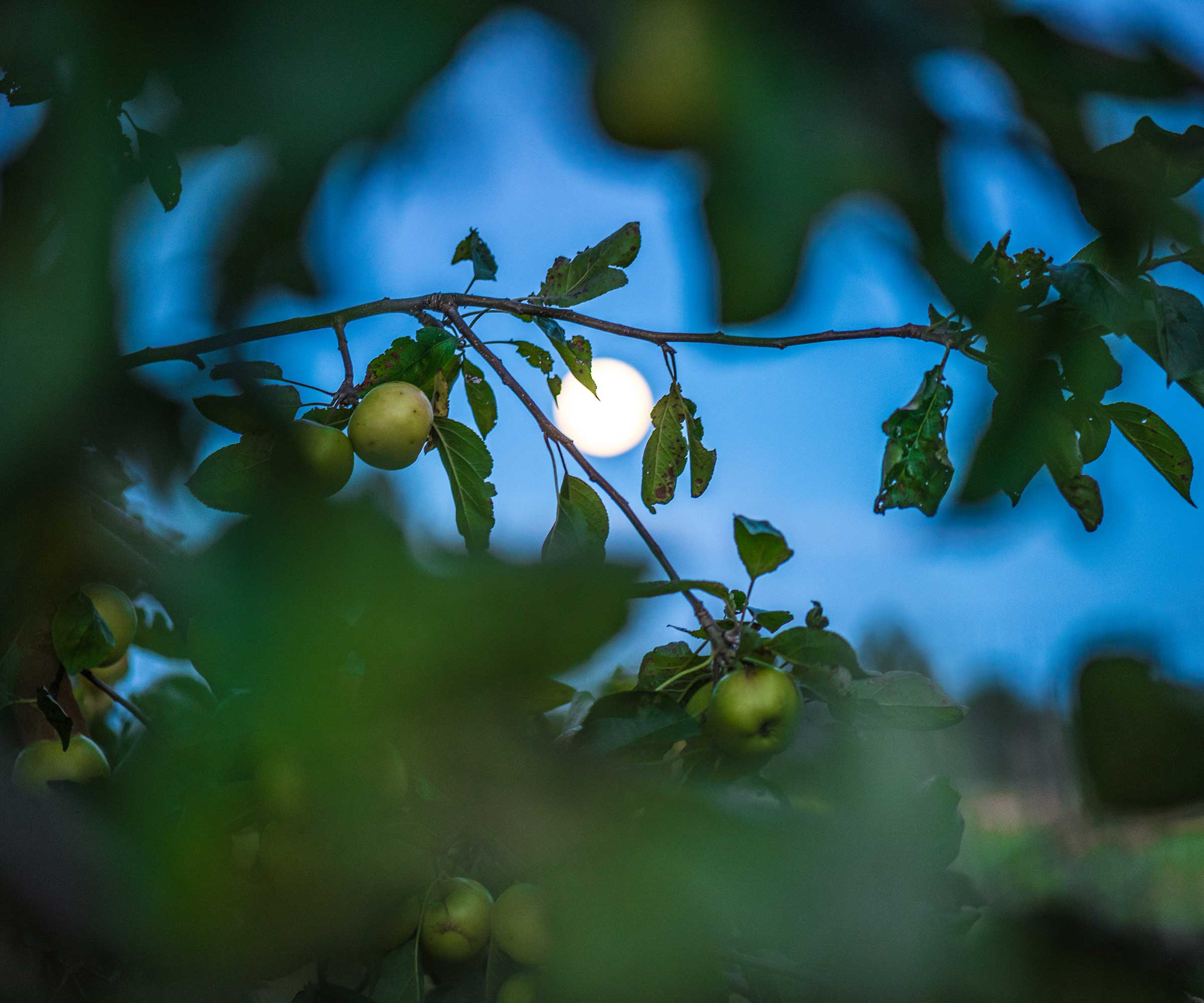
Why do certain plants bloom at night?
The answer is that these plants, which are native to tropical or arid environments, have evolved to flower after dark to take advantage of cooler night temperatures and nocturnal pollination.
By blooming after sunset and closing by the morning, these plants avoid intense daytime heat and water loss due to evaporation, which is especially important in desert climates.
Night-blooming plants thrive by adapting their flowering cycles, scent, and color, to their environment and the rhythms of nocturnal life. Here are eight of the best plants that bloom at night
1. Moonflower (Ipomoea alba)
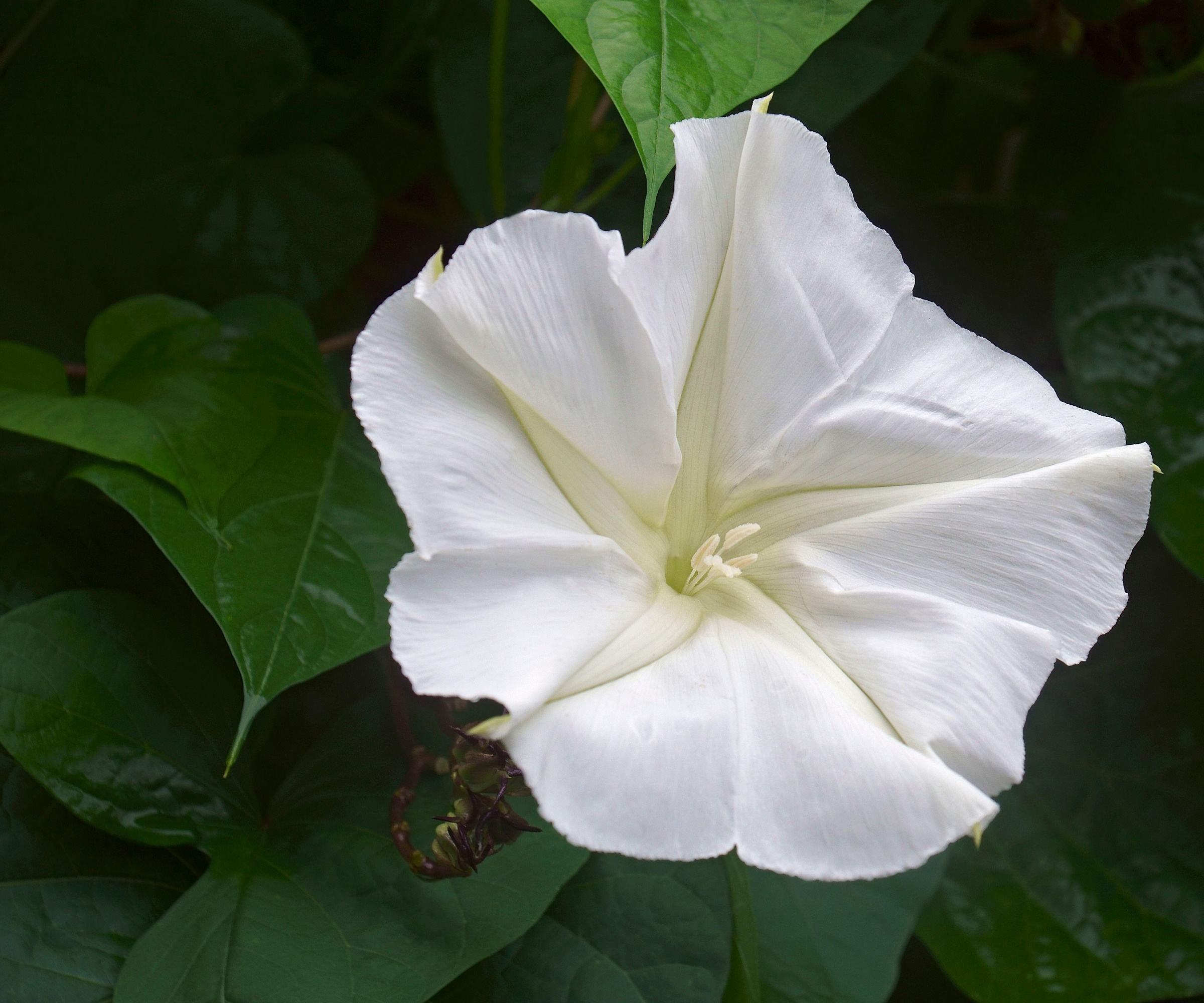
‘Moonflowers are the showstoppers of the night garden,' says Sarah Fletcher, CEO of Flower Delivery. 'Their large, white, trumpet-shaped flowers unfurl in the evening and remain open until dawn, emitting a sweet fragrance that attracts nighttime pollinators.’
Since many nocturnal pollinators rely on smell rather than sight, night-blooming flowers have strong scents to attract pollinators. Additionally, these flowers are often pale or white, which makes them more visible in low light, making it easier for pollinators to find the blooms.
You can buy 100 seeds of moonflowers, otherwise known as morning glory, from Walmart.
Attracts: Known for their reflective blooms, moonflowers are designed to draw in sphinx moths and bats, enhancing the beauty and biodiversity of your garden after dark.
Growing tips: These vining perennials need full sun during the day to bloom at night and prefer well-drained soil.
Also known as tropical white morning glory, these plants thrive in USDA hardiness zones 10 through 12, but you can grow them as annuals in cooler zones.
They can climb up to 10 to 15 feet, so they’re perfect for trellises or fences where their climbing vines can spread and showcase the stunning blooms in your moon garden. We love this Dovelina black box trellis from Target.
2. Night-Blooming Jasmine (Cestrum nocturnum)
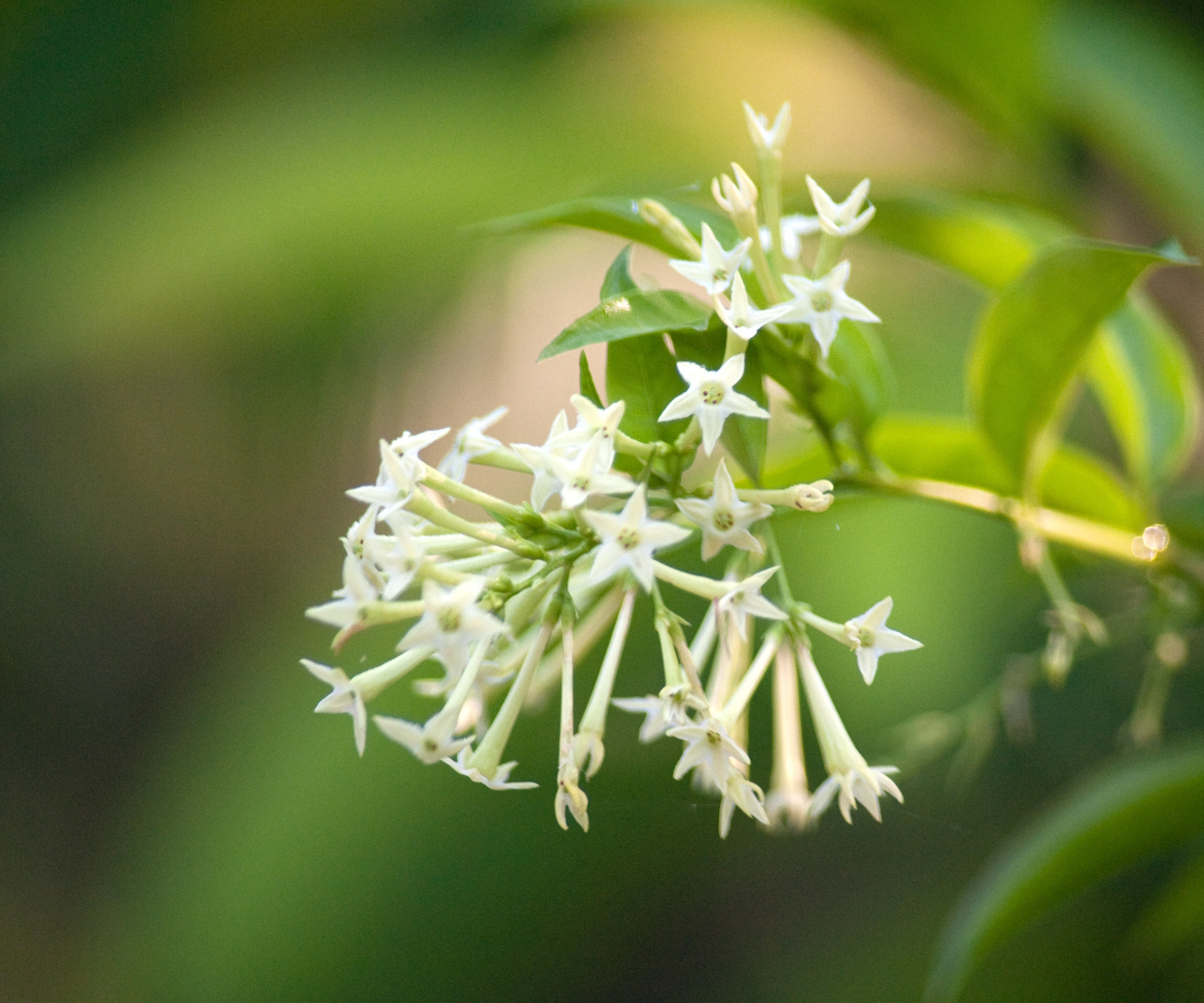
Night-blooming jasmine produces clusters of small white-green flowers that release a strong scent after dark, making your garden a delight to walk through on warmer evenings.
Attracts: Their highly fragrant scent is attractive to butterflies, moths, bats.
Growing tips: 'Plant it in well-draining soil and give it partial to full sun,' advises Matthew Wilson, horticulturist and owner of Handy Gardeners. 'It can grow up to eight to 10 feet tall, making it an ideal backdrop for smaller plants.
'Widely cultivated in tropical regions, it grows best in USDA zones 8 through 11, where mild winters allow it to bloom for months on end.
'Ideal as a backdrop for smaller plants, night-blooming jasmine adds height and aroma. It is suitable for container gardening in larger pots, allowing for easy relocation indoors during the colder months.'
For those interested in growing this enchanting plant, following jasmine care tips can help ensure a flourishing and fragrant garden.
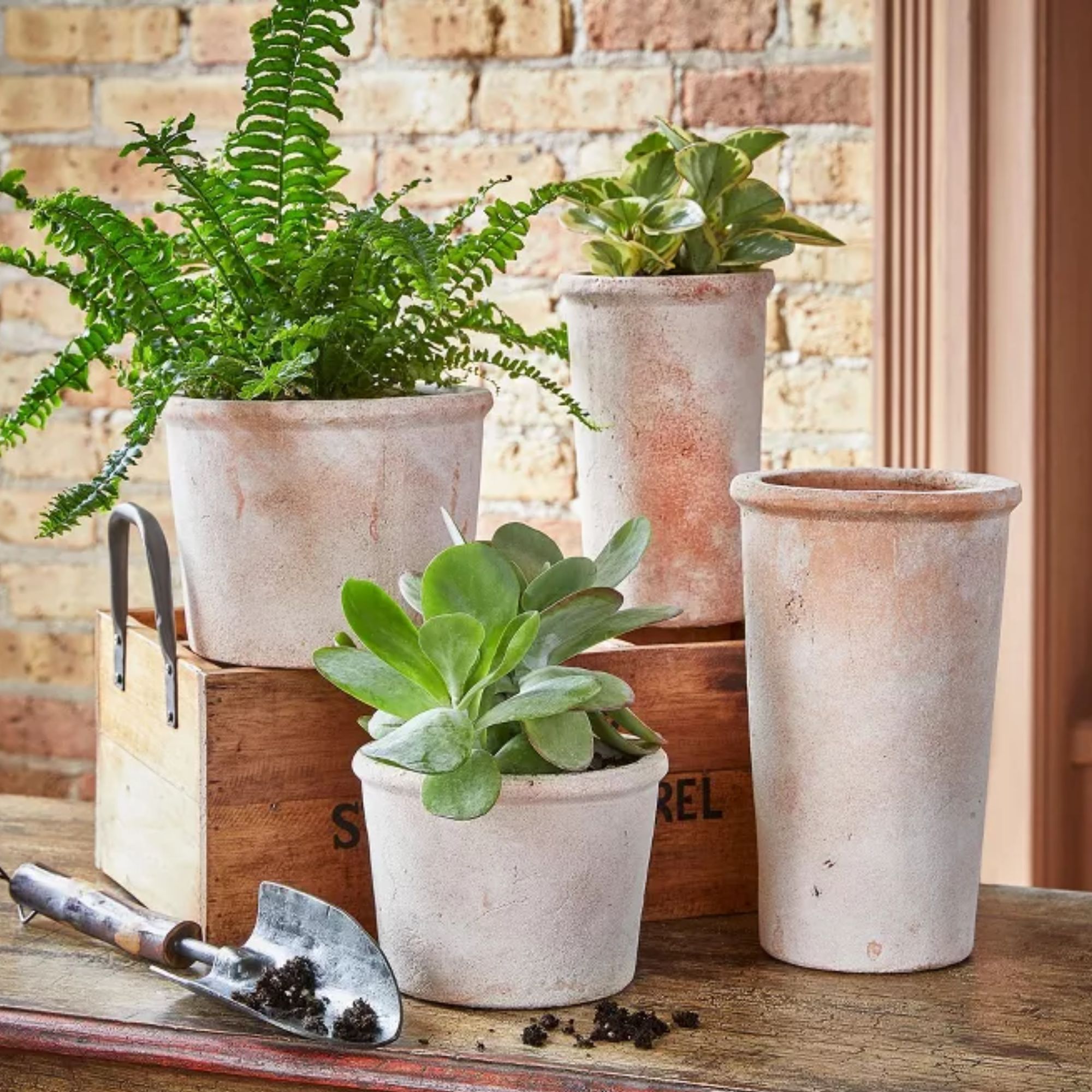
Made from terracotta, this planter naturally regulates moisture, helping to keep your flowers healthy by preventing root rot. Its rustic whitewashed finish beautifully contrasts with vibrant evening blooms.

Matthew Wilson, CEO of Handy Gardeners, leads the company with a passion for landscaping and environmental sustainability. Under his guidance, Handy Gardeners has become a trusted name in the industry, providing top-notch gardening and landscaping services.
3. Evening Primrose (Oenothera biennis)

Of all the plants that bloom at night, Evening primrose is one of the more unexpected flower varieties.
It has large, bright yellow bell-like blooms that open at dusk and remain open through the night, providing a bright contrast against a darkening garden. 'Aesthetically, this plant might not be for everyone, it's not the most delicate or beautiful, but what it lacks in elegance it makes up for in a rich, layered scent,' says Rachel Bull, head of gardens at Homes & Gardens.
Attracts: The soft yellow blooms of evening primrose are a magnet for nighttime pollinators like moths and bees.
Growing tips: 'I discovered evening primrose in my front yard last year after it self-seeded in a large flower bed – the best kind of gardening accident, in my opinion,' continues Rachel. 'The plants are large, with a lot of bushy, spikey-looking foliage, and if grown in the ground with space for the roots to expand, they can reach up to four feet in height. Stems continue to produce flowers as they grow, and I still have some flowering in my yard in October.
'If I were choosing to grow evening primrose again, I might consider containing it in a large pot, and positioning it close to a door or seating area to get the most out of its nocturnal perfume.'
It’s a hardy plant, thriving USDA zones 3 to 9, making it easy to grow, even for beginners.

Rachel is a gardening writer, flower grower and floral designer. Her journalism career began 15 years ago on Country Living magazine, sparking a love of container gardening and wild planting. After more than a decade writing for and editing a range of consumer, business and special interest titles, Rachel became editor of floral art magazine The Flower Arranger. She then trained and worked as a floral designer and stylist in London before joining the Homes & Gardens team.
4. Tuberose (Polianthes tuberosa)
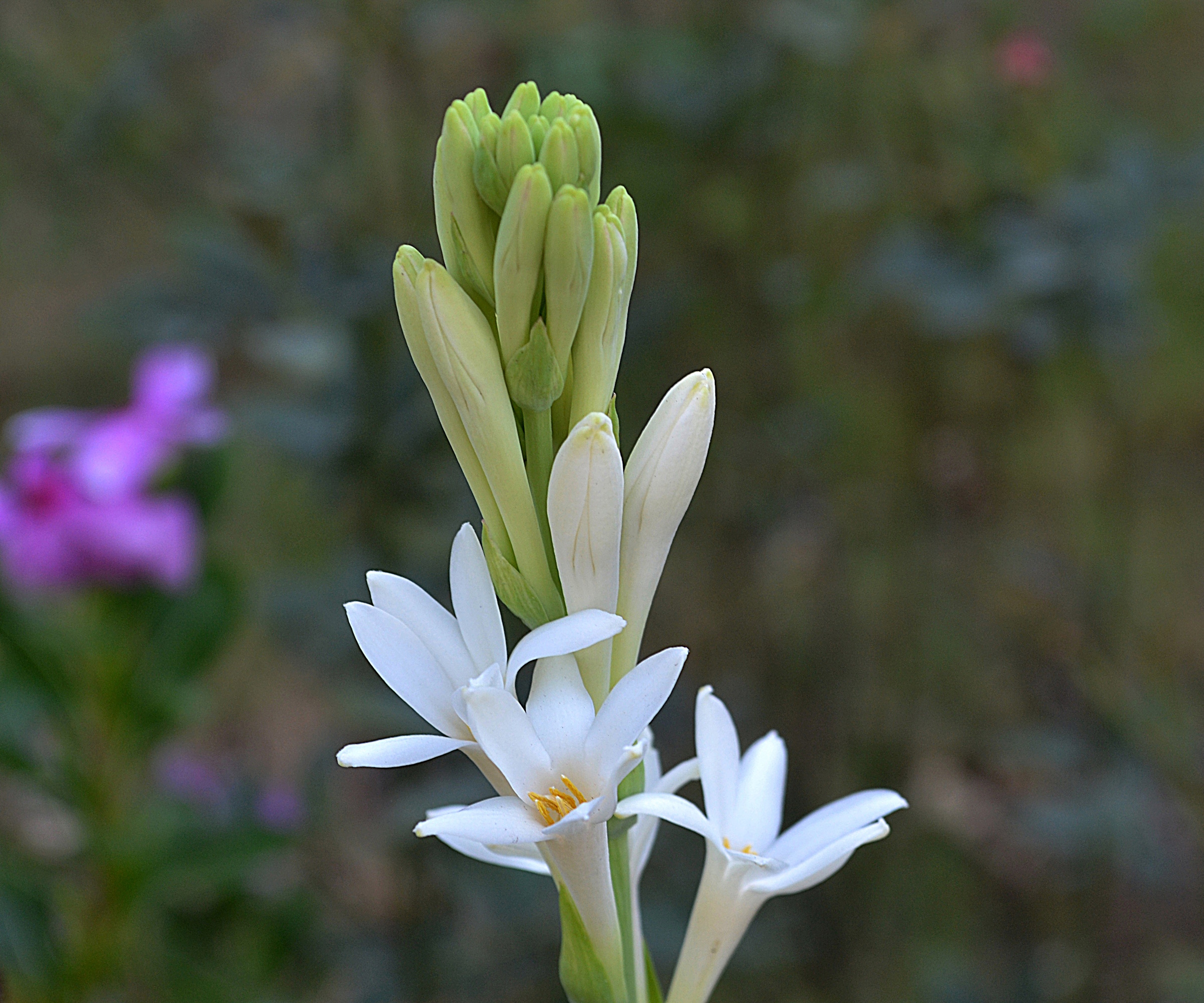
Tuberose, a perennial plant, is known for its enchanting fragrance that intensifies as the night progresses. Plant tuberose near seating areas to enjoy its fragrance on warm summer evenings.
This bloom has been used in perfumes for centuries, and its essence is frequently found in luxurious fragrances, making it a perfect plant to use when planting a scented border.
Attracts: Tuberose flowers attract pollinating insects, such as bees, hoverflies, and butterflies with their strong scent.
Growing tips: Tuberose thrives in well-drained soil and full sun, but appreciates some afternoon shade in hotter climates. They grow to around two to three feet tall.
This plant is a bit more tropical, suited for USDA zones 7 to 10, where it can bloom during late summer and fall.
5. Night Phlox (Zaluzianskya capensis)
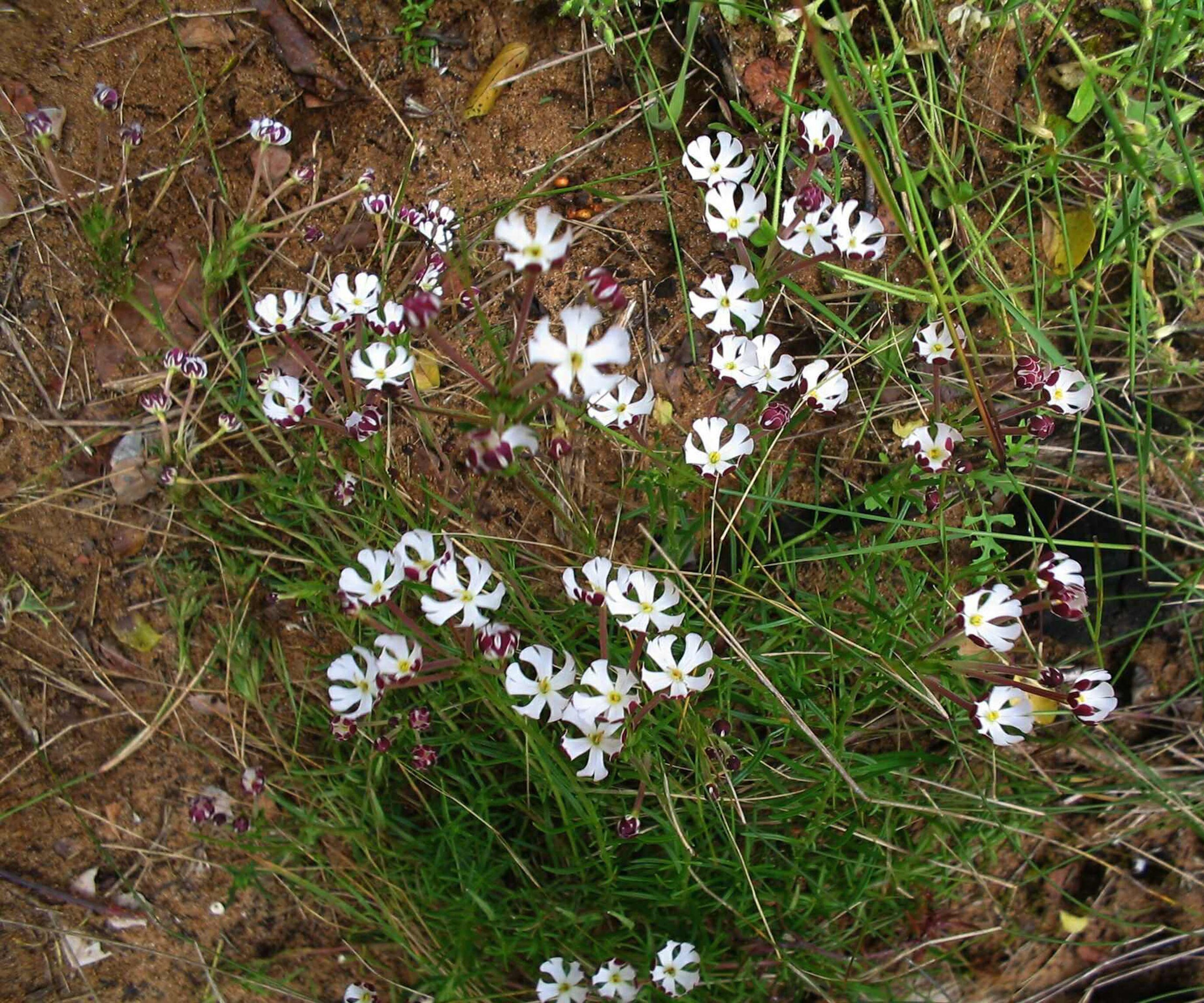
'Renowned for its sweet fragrance, Night Phlox unfurls its star-shaped white and purple blooms in the evening,’ says explains Josh Payne, owner of Classic Landscapes.
'Its scent adds an aromatic layer to garden spaces, an aspect I always aim to integrate for a more immersive, sensory garden experience.'
Attracts: This hardy perennial, perfect for fall planting, attracts moths and other night-flying insects.
Growing tips: Thriving in full sun to partial shade, night phlox typically reaches a height of about 12 inches, making it a versatile addition to any garden bed or container.
Ideal for USDA hardiness zones 6 to 10, this annual has white, pink, and purple blooms.
Its low-growing habit makes it ideal for filling gaps between taller night-bloomers.
6. Four O’Clocks (Mirabilis jalapa)
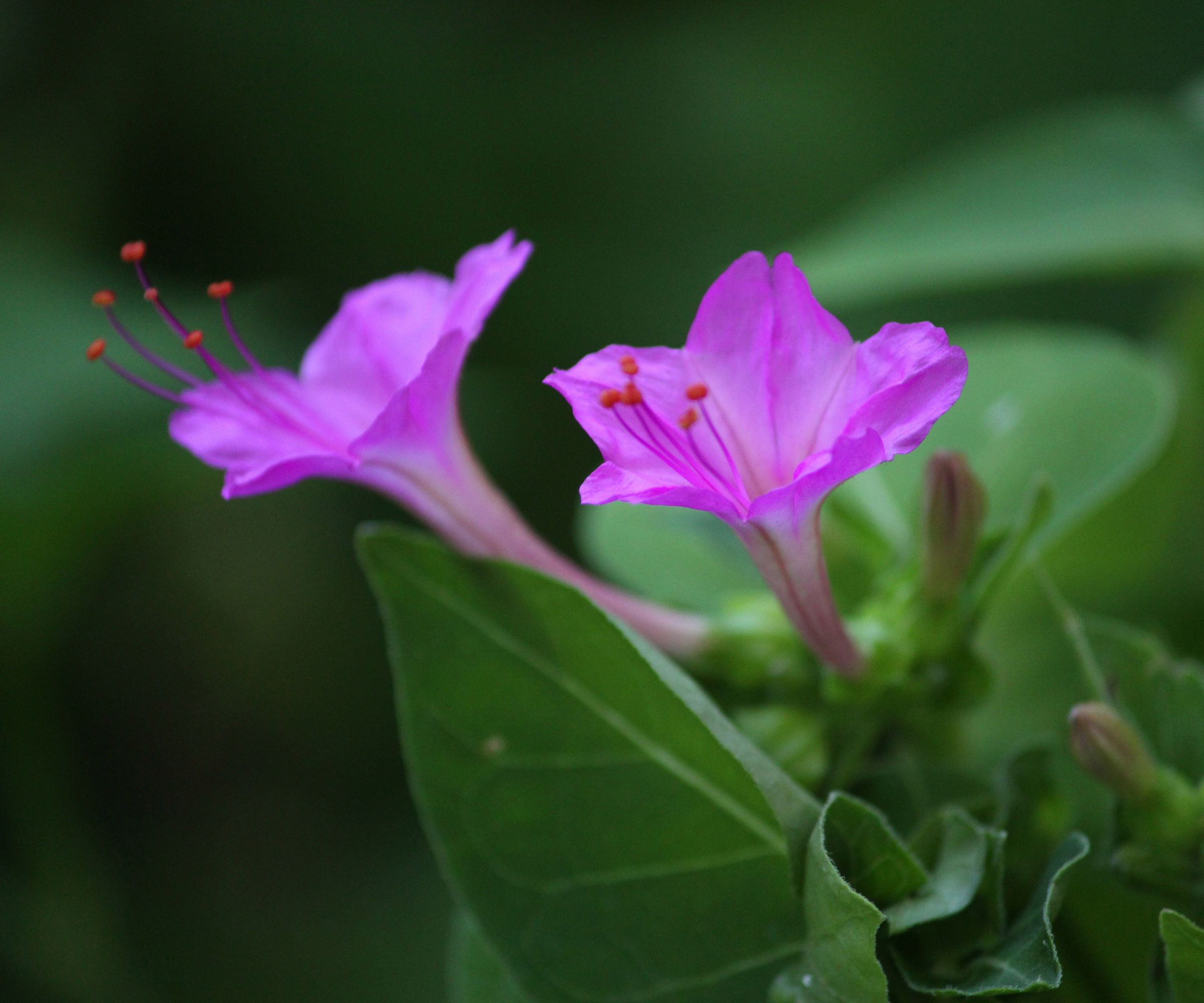
As its name suggests, four o’ clocks start opening in the late afternoon, making it a great transitional plant between day and night.
Its vibrant flowers come in various colors – pink, white, yellow – and this plant reseeds itself easily, so once you have it, it tends to keep coming back year after year.
Attracts: Moths and hummingbirds are drawn to the nectar-rich blooms.
Growing tips: This plant prefers well-drained soil and full sun to partial shade.
It grows well in USDA zones 7 to 11, reaching heights of two to three feet tall and spread out to form bushy clusters.
7. Queen of the Night (Epiphyllum oxypetalum)
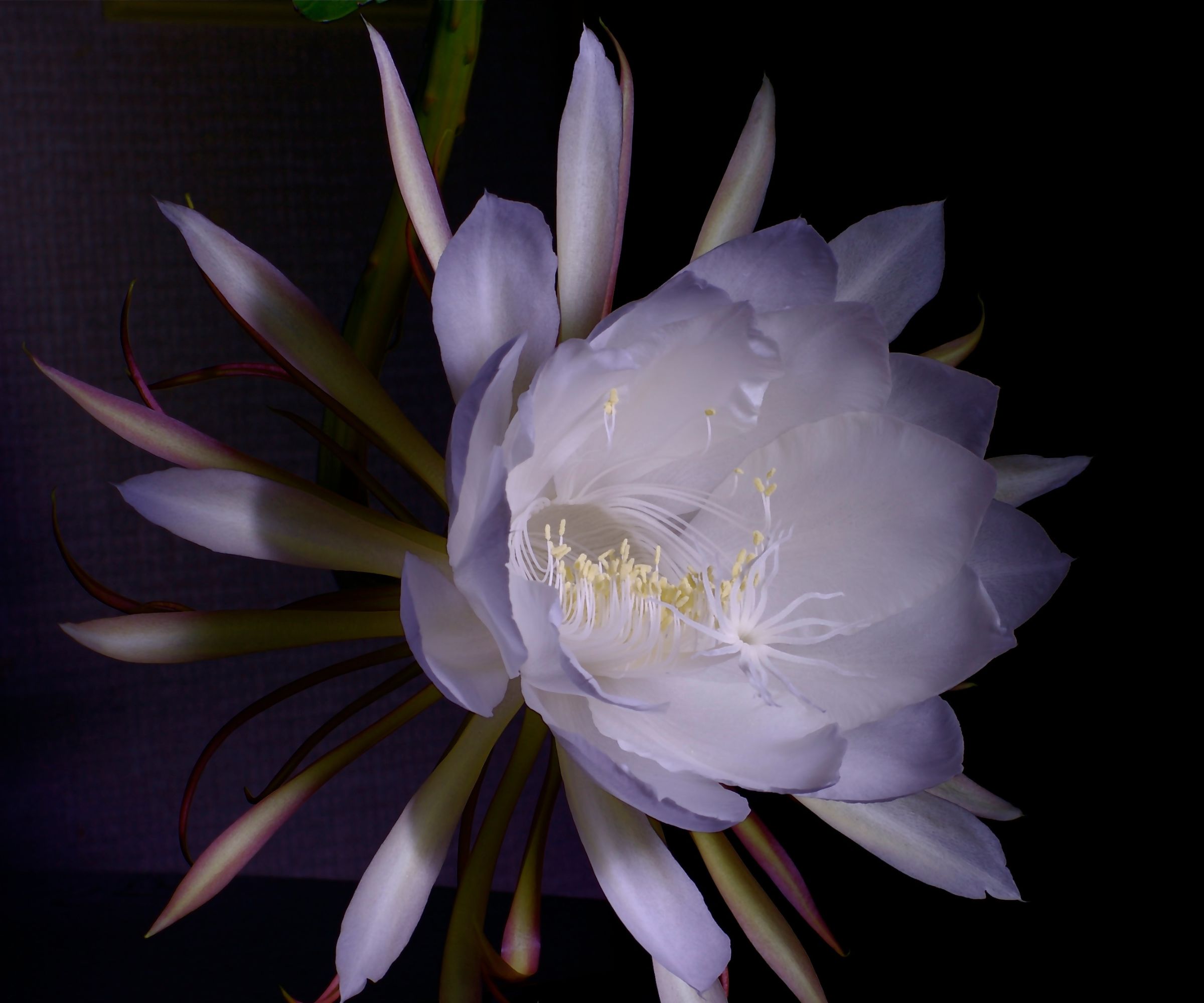
Queen of the Night is a cactus that produces huge, fragrant white flowers – but only for a single night. The drama and enchantment of waiting for the one-night bloom is an experience in itself.
While it may seem odd that these plants only bloom once, this short bloom duration conserves energy by blooming during peak pollinator activity times.
Attracts: This plant attracts moths, bats, and nocturnal birds that help spread its seeds.
Growing tips: To thrive, this cactus needs indirect light and consistent watering. However, you should let the soil dry somewhat between waterings.
This climbing cactus can reach 10-20 feet in length, and it needs well-draining soil to prevent root rot.
As an epiphyte, it prefers to use other plants to support itself rather than growing in the soil. This elusive beauty thrives in USDA zones 10 to 12 and loves warm, dry conditions with minimal water.
8. Angel’s Trumpet (Brugmansia spp.)
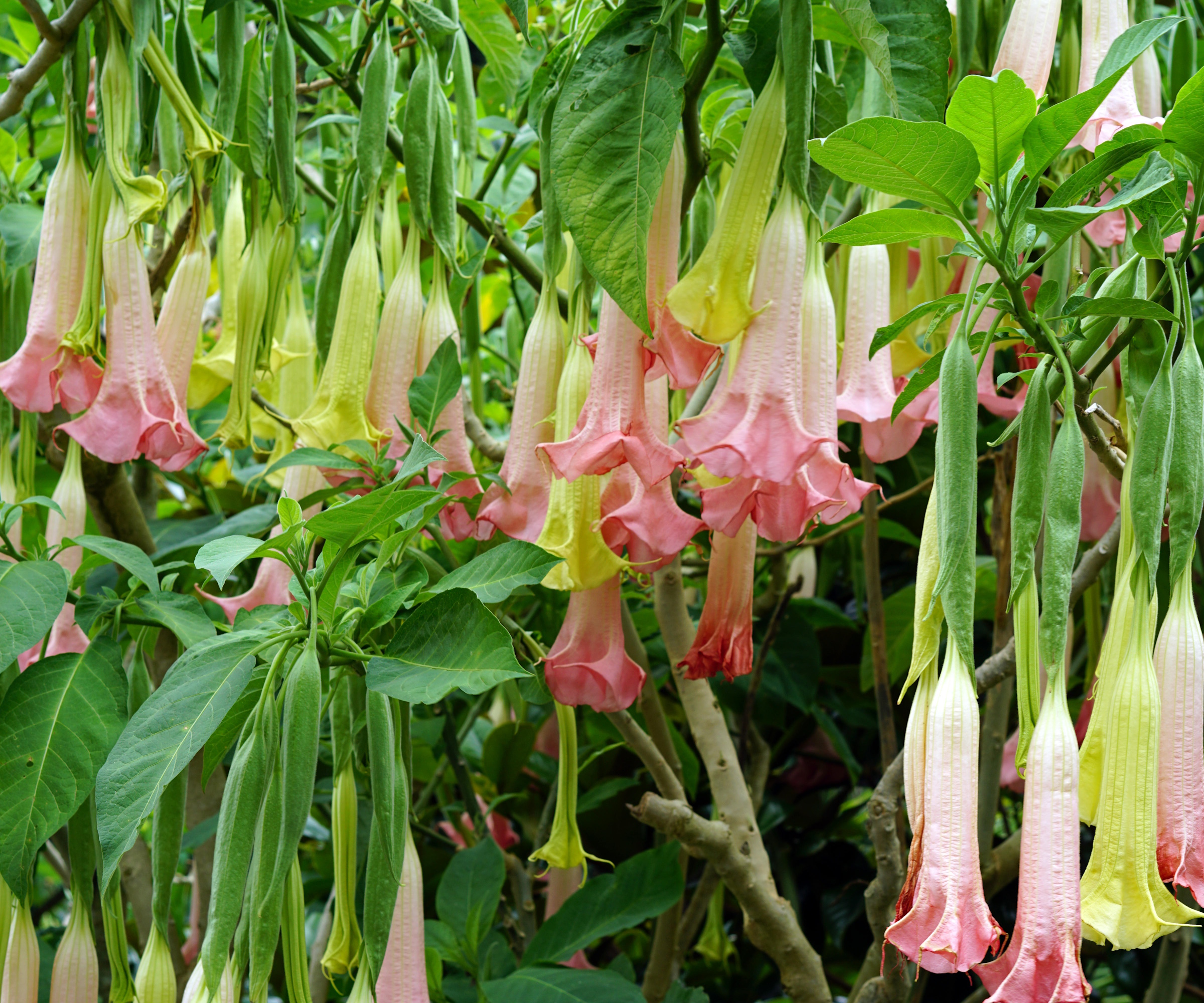
These pendulous, trumpet-shaped flowers can be pink, white, or yellow and release a sweet scent at night.
Attracts: Moths and other night-pollinators are drawn to the intoxicating scent.
Growing tips: This tropical-looking plant can grow into a small tree, reaching 10 to 15 feet tall. It prefers full sun and well-drained soil but can handle partial shade.
Angel’s trumpet is best grown in USDA zones 8 through 10, where it enjoys mild winters.
If you have the right climate, why not pot these fragrant plants to make your balcony smell nice? Keep them close to enjoy their night-blooming flowers and soothing scents as the evening unfolds.
Looking to enhance your garden with more blooming plants? Consider planting some of the best fall-blooming native plants to keep your yard vibrant throughout the colder months, so that no matter the season or time of day, you can ensure your outdoor space remains lively and colorful.
Sign up to the Homes & Gardens newsletter
Design expertise in your inbox – from inspiring decorating ideas and beautiful celebrity homes to practical gardening advice and shopping round-ups.

Lola Houlton is a news writer for Homes & Gardens. She has been writing content for Future PLC for the past six years, in particular Homes & Gardens, Real Homes and GardeningEtc. She writes on a broad range of subjects, including practical household advice, recipe articles, and product reviews, working closely with experts in their fields to cover everything from heating to home organization through to house plants. Lola is a graduate, who completed her degree in Psychology at the University of Sussex. She has also spent some time working at the BBC.
-
 Nate Berkus says slipcovered sofas are back on trend – and I just found a way to create this designer-approved laid-back look from just $86
Nate Berkus says slipcovered sofas are back on trend – and I just found a way to create this designer-approved laid-back look from just $86This classic style is making a strong comeback, but did you know you don't have to buy a whole new couch to get this Nate-approved look?
By Eleanor Richardson
-
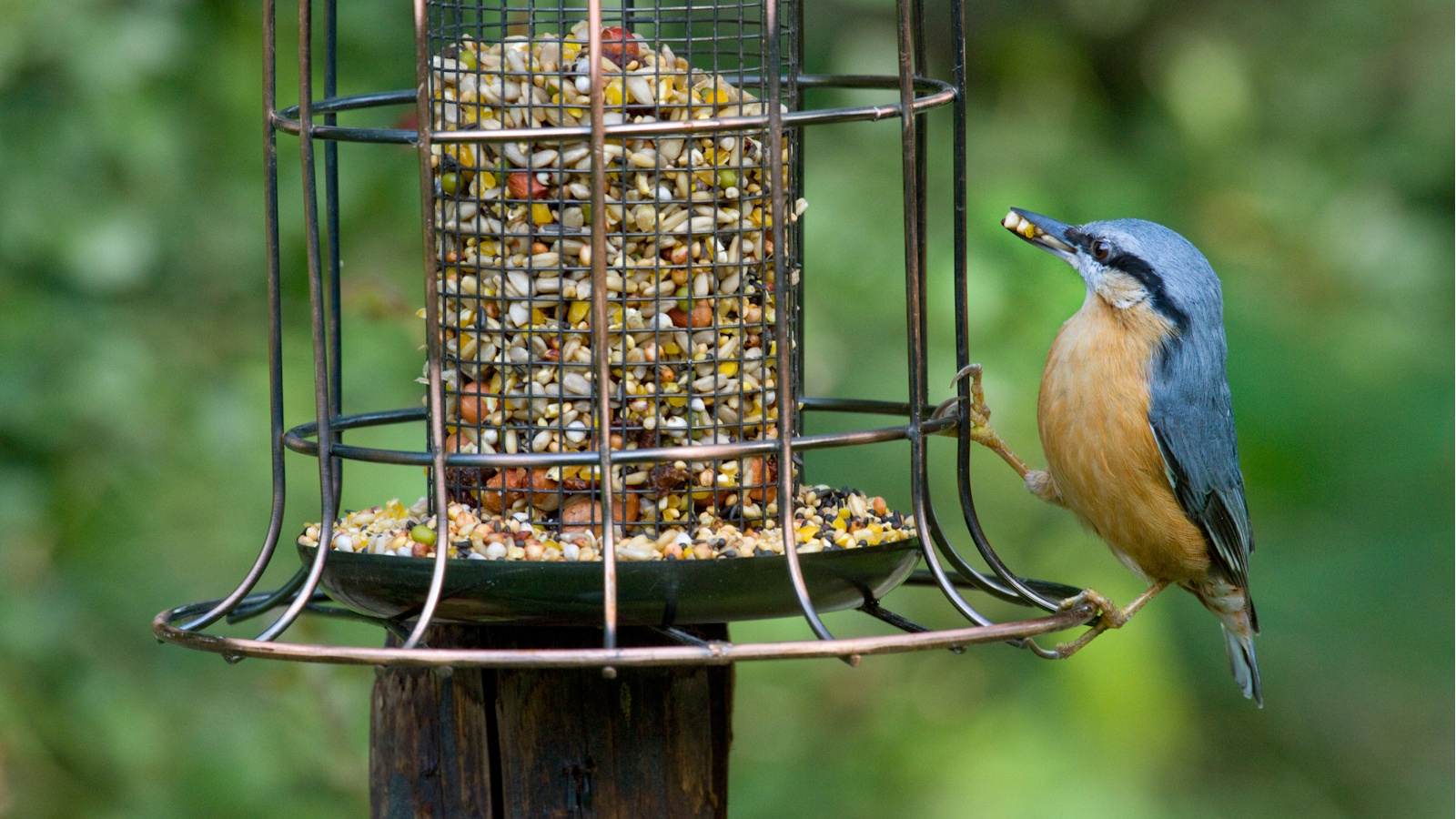 Gardeners are putting pasta in bird feeders this spring – but there is one important warning you need to know before following suit
Gardeners are putting pasta in bird feeders this spring – but there is one important warning you need to know before following suitCooked pasta can be a nutritious snack for birds, but serving it in the wrong way could cause them harm
By Tenielle Jordison
